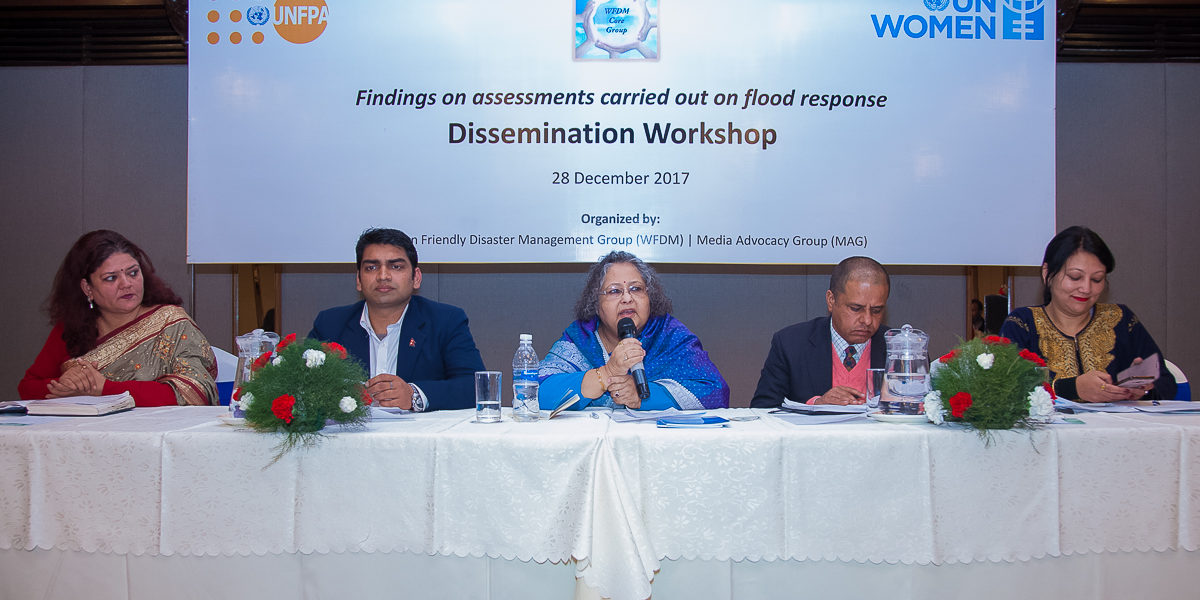
Beginning in the second week of August 2017, Nepal experienced a period of heavy rainfall (hydro-meteorological stations in three Terai districts recorded the heaviest levels of precipitation in 60 years) resulting in large-scale adverse impacts on life, livelihoods and infrastructure impacting 1.7 million people with 43,400 houses destroyed, 20,900 families temporarily displaced, 160 people dead, 29 missing and 45 injured (20 September, MoHA). After the conclusion of the Initial Rapid Assessment (IRA) on 30th August 2017, MoHA released data showing a concentration of urgent needs in Rautahat, Sunsari, Sarlahi, Bardiya, Saptari, Siraha, Morang, Banke, Mahottari, and Parsa districts. MoHA data shows that 1 million people / 191,717 households, against the overall affected caseload of 1.7 million people, in these locations, have particularly pressing needs on the basis that their homes sustained complete destruction or partial damage. The total population of the ten most severely affected districts is estimated at 1 million. Of these, around 540,000 are women; 270,000 are women of reproductive age. An estimated 21,000 are pregnant, and some 6,700 are likely to experience complications over the next three months. Some 6656 are women with disabilities. Further, 18% of households in the region are female-headed.
In times of natural hazards such as flooding, sexual and other gender-based violence increases, as do pregnancy-related deaths and morbidity including the potential for sexual violence increases. Meanwhile, health and social services often become unavailable or inaccessible to affected population, hence there is a need to prioritize implementation of the Minimum Initial Service Package (MISP) immediately as lifesaving standard of humanitarian response to ensure access, services and information are available to women and girls, men and boys, and transgender populations of reproductive age. There is a need to protect vulnerable people in the area, with an emphasis on women and girls of reproductive age, with an emphasis on those groups which are already affected by discrimination for reasons of caste, ethnicity, gender, age, disability, marital status, sexual orientation, gender identity and poverty.
WFDM is the core group of women’s leading organizations in Nepal consisting of Home Net South Asia, Beyond Beijing Committee (BBC), Women for Human Rights (WHR), SAATHI, Forum for women, law and development (FWLD), Media Advocacy Group (MAG), Jagaran Nepal and Feminist Dalit Organization (FEDO) Immediately after the earthquake in April 25, 2015, this group took initiative in ensuring the gender-responsive relief, recovery and reconstruction in the post-disaster phase. The recent flood in April 2017 in Tarai region affected more than 35 districts out of 75 districts of Nepal. The assessment was carried out in 5 districts namely; Sunsari, Saptari, Rautahat, Mahottari, and Sarlahi being most affected districts from the perspective of gender friendly disaster management. WFDM, in the funding of central emergency response fund (CERF), with the support of UN Women and UNFPA, carried out the assessments ‘who is doing what in the post-flood disaster early response’ and ‘ gender assessment on the work of different clusters activated for flood response’. Media Advocacy Group (MAG) took the lead in the coordination with the humanitarian clusters in the districts.
Programs
News and Events
Articles Published on Online Portals
৙а•На§∞৲ৌ৮ু৮а•Н১а•На§∞а•Аа§≤а§Ња§И а
Published On:а§Ша§Я৮ৌ а§∞ ৵ড়а§Ъа§Ња§∞
а§∞а§Ња§Ја•На§Яа•На§∞৙১ড় а§Ха§Ња§∞а•На§ѓа§Ња
Published On:а§Ша§Я৮ৌ а§∞ ৵ড়а§Ъа§Ња§∞
а§Єа§Ѓа•Н৐৮а•Н৲৵ড়а§Ъа•На§Ыа•З৶ুৌ а
Published On:а§Ша§Я৮ৌ а§∞ ৵ড়а§Ъа§Ња§∞
women in media
Published On:wow Magazine
‘১а•За§≤ а§≠а§ња§Єа§Њ’ а§≤а§Ња§Ча•На
Published On:а§Ша§Я৮ৌ а§∞ ৵ড়а§Ъа§Ња§∞-৐৐ড়১ৌ а§ђа§Єа•Н৮а•З১